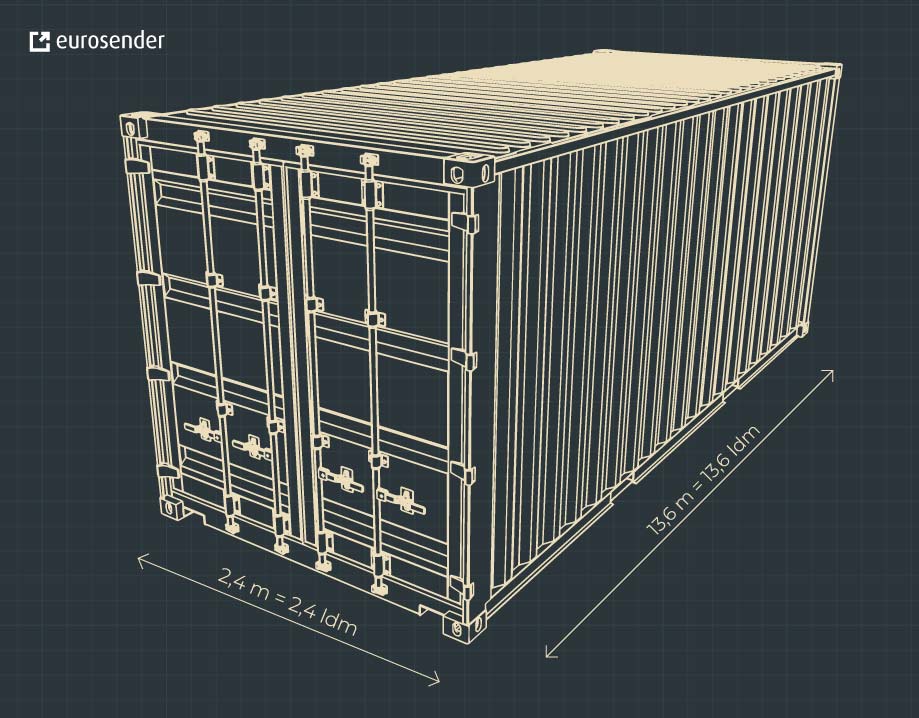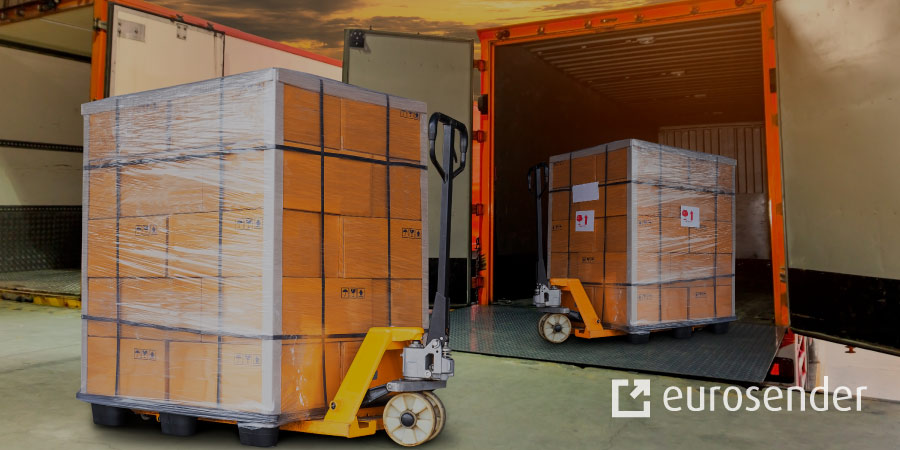What Is Loading Metre (LDM) & How to Calculate It?
TL;DR
- A loading metre (LDM) is a unit of measurement for cargo transported by truck, representing 1 metre of loading space.
- LDM helps determine the appropriate trailer size for shipments, ensuring efficient use of space and cost-effectiveness.
- The formula to calculate LDM is length in metres multiplied by width in metres divided by 2.4.
- For stackable goods, the stacking factor should be included in the calculation, and maximum weight limits per loading metre vary by vehicle type, typically up to 30 tonnes.
A loading metre (also known as loading meter or LDM) is the standard unit of measurement for transport by truck and is used as a unit of measurement for cargo that needs to be transported but cannot be stacked. A loading metre is equal to 1 m of loading space of a truck’s length. Read on to find out more about what LDM means in shipping, why it is important, and how to calculate it.
Create an account for free!
What does LDM mean in shipping?
LDM, or loading metre, is a unit that is used to determine the cargo space that will be occupied by transported freight.
People often confuse the term with linear metres or square metres, but they do not mean the same thing. LDM refers to truck transport and indicates 1 metre of cargo space per the length of the truck.
Why are loading metres important in logistics?
Loading metres are important because they allow shippers and trucking companies to determine how large a trailer needs to be ordered for a load to be transported. The calculation of LDM is very important when organising both groupage and FTL transport since LDM helps businesses to determine the following factors:
- Whether or not cargo would fit in a given truck
- Whether a larger or smaller vehicle would be more cost-effective for both the shipper and the carrier, and also more sustainable for the environment
- The amount of space the cargo would occupy and the amount of free space left for additional shipments
Read more about:
- Groupage services in Europe
- Shared truck (LTL) shipping
- Full truckload (FTL) shipping
- How many pallets fit in a truck?
What is the average size of trucks in Europe?
In Europe, the average length for trucks such as tautliners is 13.6 m. Mega trailers, box vans and refrigerated trucks can be included in this category. Truck heights vary from 2.7 to 3 m, while the width is usually around 2.4 m.
You should always make sure that there is at least 5 cm of space left in the loading height when calculating the LDM. Logistics providers use loading metre calculations to determine an adequate amount of dimensional weight for each shipment.

How to calculate loading metres (LDM) for truck shipping
Length in metres x width in metres / 2.4 = number loading metres per piece
When the approximate width of a truck is 2.4 m, 1 loading metre is approximately 2.4 m² (2.4 m width x 1 m length). It is easy to calculate the LDM of the cargo if you calculate the floor area that the cargo occupies. By multiplying the floor area length by the width and then dividing by 2.4 m, you get the number of loading metres.
How to calculate LDM for pallet shipping
Using the common European pallets as examples, we can calculate the LDM for a single pallet as follows:
- Euro pallet (EUR, EUR 1): 1.2 m x 0.8 m / 2.4 m = 0.4 LDM
- UK pallet (EUR 2): 1.2 m x 1.0 m / 2.4 = 0.5 LDM
- Mini pallet (EUR 6): 0.8 m x 0.6 m / 2.4 m = 0.2 LDM
How to calculate LDM for stackable goods
If the cargo can be stacked, include the stacking factor in the formula above. If, for example, 2 pallets can be stacked, a stacking factor of 2 is used. Again using the same pallet sizes, we get the values below:
- Euro pallet (EUR, EUR 1): 1.2 m x 0.8 m / 2.4 m / 2 = 0.2 LDM
- UK pallet (EUR 2): 1.2 m x 1.0 m / 2.4 / 2 = 0.25 LDM
- Mini pallet (EUR 6): 0.8 m x 0.6 m / 2.4 m / 2 = 0.1 LDM
If more than one vehicle is to be loaded in the same way, simply multiply the result by the number of vehicles. Let’s say that 16 vehicles would be used, the calculation would go:
- Euro pallet (EUR, EUR 1): 1.2 m x 0.8 m / 2.4 m / 2 * 16 = 3.2 LDM
- UK pallet (EUR 2): 1.2 m x 1.0 m / 2.4 / 2 * 16 = 4 LDM
- Mini pallet (EUR 6): 0.8 m x 0.6 m / 2.4 m / 2 * 16 = 1.6 LDM
More about logistics calculations:
- How to calculate tare weight
- How to calculate cargo CBM
- How to calculate volumetric weight
- How to calculate dimensional weight
Is there a maximum weight per loading metre?
Yes, be careful not to exceed the limit for how much can be carried in each loading metre. This limit will vary depending on the vehicle type, and can be up to a maximum of 30 tonnes per loading metre. For a standard truck, the maximum capacity is 1,850 kg per loading metre.
Do I need to provide the LDM when shipping with Eurosender?
This depends on how your cargo will be loaded.
You won’t need to provide the LDM if you’re shipping on Euro pallets. In all other cases, when shipping freight with Eurosender, you will need to calculate and then provide the LDM when placing your order.
Now that you know what loading metres are and how to calculate them, check our freight services and plan your delivery with the best international logistics providers!
Interested in learning more about pallet and freight shipping? Check all our articles about pallet deliveries.
Click to ship up to 70% cheaper
About the author






